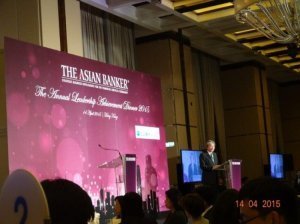Vivek Sood's Blog, page 46
September 2, 2015
Who Hijacked Your Supply Chain?
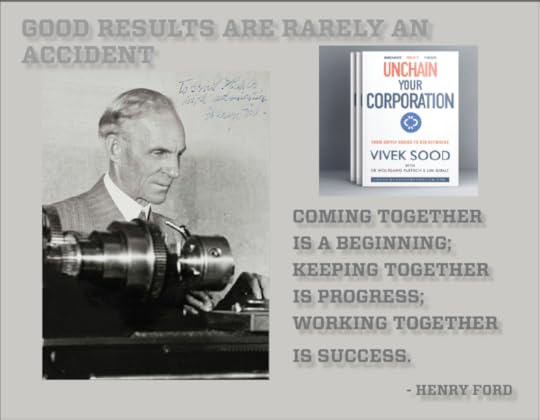 I do not publish too many posts on LinkedIn any more because of ‘Gresham’s Law‘. However, once in a while I still publish content that would be relevant to that platform.
I do not publish too many posts on LinkedIn any more because of ‘Gresham’s Law‘. However, once in a while I still publish content that would be relevant to that platform.
I was delivering the keynote speech at the Quintiq World Tour recently at the Marina Bay Sands in Singapore – where I met over 200 supply chain professionals. I start my discussions of this nature with a simple question about the definition of supply chain in your company. It is always interesting to note that no two definitions of supply chain are exactly the same in practice.
The boundaries of supply chains within the companies are rarely clear. I have written about this extensively in my books and blogs – here is one small post for example. You do not have to be a C-Level genius to see the impact of this confusion on your business. Even a journalist with relatively shallow understanding of key business underpinnings can quickly grasp the enormous waste that results from confusion in planning.
What struck me in the event – when I was answering questions as part of the concluding panel – was that a number of supply chains have been hijacked by institutions for their own purposes. Sometimes an entire nation, or at least its government can be led to believe that supply chain is merely logistics, or procurement. In due course, this will show up as a huge disconnect between the government policy and commercial imperatives of the businesses it is trying to attract and keep in this global high-stakes game.
At a micro-level, you may get only the first level results and miss out the four higher level results from supply chains. This would be like owning a fruit laden tree and just harvesting the fruit from the lowest rung of the ladder, while leaving all the other fruit in the middle and top to rot on the tree. Here is a simple graphic to explain what I mean:
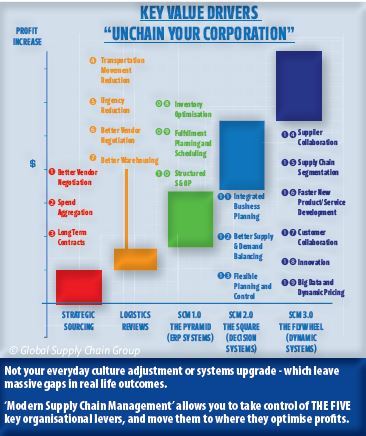 Source: www.unchainyourcorporation.com
Source: www.unchainyourcorporation.com
There is a self-benchmarking tool at the source of this graphic – which may help you decide whether your supply chain has also been hijacked. If you have doubts about whether you should consider this quick self-benchmarking tool, consider the slide below (from my presentation at the event) shows the contrast between the two extremes of SCM clearly:
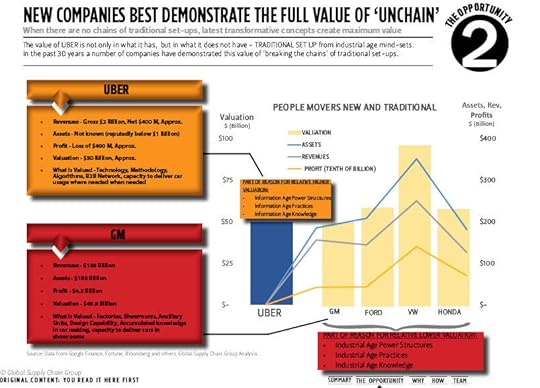
Do not forget – who defines your supply chain will also define your business. Might as well be you.
The post Who Hijacked Your Supply Chain? appeared first on Global Supply Chain Group | Management And Strategy Consultants.
Uses and misuses of benchmarks in supply chain management
There are lies, damned lies and statistics.
Benjamin Disraeli
 Benchmarks are a peculiarly virulent form of statistics which can be used to make a positive change, or misused to make a dodgy sale. On one hand a benchmark, such as a world record in 100m race, can motivate an athlete to perform better and better each time they train. It gives something to aim towards, sets an expectation that if others can do it, then why you cannot, and leads to search for better ways of achieving the results.
Benchmarks are a peculiarly virulent form of statistics which can be used to make a positive change, or misused to make a dodgy sale. On one hand a benchmark, such as a world record in 100m race, can motivate an athlete to perform better and better each time they train. It gives something to aim towards, sets an expectation that if others can do it, then why you cannot, and leads to search for better ways of achieving the results.
But all that happens only if the benchmarks have credibility.
When you find out what Lance Armstrong has been doing to achieve his miraculous results you lose faith in the benchmark, and start suspecting other benchmarks too. You test every benchmark extremely carefully, and use it sparingly lest you get dodged again.
An example is in freight rates benchmarks. Costs of operating a truck, a train or a ship are, by now, indexed to nth degree. One can quite easily benchmark prices to these operating costs without any consideration of the local market conditions, your peculiar service requirements, and the balance between the supply and demand -which changes from moment to moment.
When a ship is full, it is full. The only way to get your container on board that ship would be get someone else’s container knocked off. That will require a lot more price incentive or market power than most buyers are willing to muster. This is another way of saying that supply chain infrastructure suffers from highly inelastic pricing paradigm, and as such price benchmarks are useful only to compare the changes in the market conditions from moment to moment.
When analysts start using these kind of benchmarks for performance reviews, or assess cost savings potential – they are not only missing the point, they are really using dodgy statistics to make a sale.
In our work, we use benchmarks many times but we are extremely careful to use the right benchmark for the right purpose and state its limitations. Most executives who are not close enough to the benchmarks or the markets can easily miss the fine print to their regret later.
Here is a lighter view to this discussion (for copyright reasons I will not post the dilbert cartoon directly): https://twitter.com/kristoffer_nord/status/480978589903765504
The post Uses and misuses of benchmarks in supply chain management appeared first on Global Supply Chain Group | Management And Strategy Consultants.
How good is your supply chain optimisation?
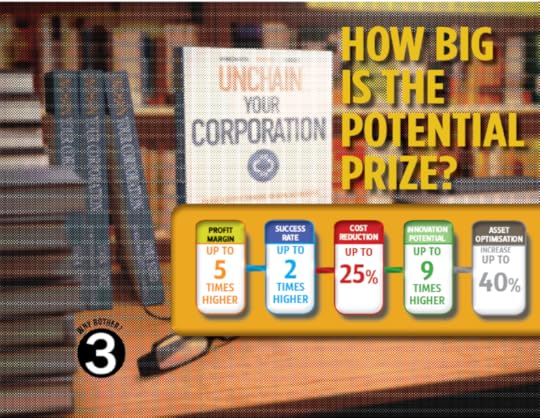 System demos are tedious things at best. The developers are trying to showcase the best aspects of their baby in best possible light. They have spent months, sometimes years, thinking about and developing functionality. It is really a big ask to show off the usefulness of it all, in half an hour or so.
System demos are tedious things at best. The developers are trying to showcase the best aspects of their baby in best possible light. They have spent months, sometimes years, thinking about and developing functionality. It is really a big ask to show off the usefulness of it all, in half an hour or so.
But I sat through this system demo, as I do with many others, because I make it my business to always know what is the latest and greatest in supply chain management.
They called it a revenue optimisation system and it was already being used at one of the customers who had a need for it. I was being asked to assess the commercialisation potential. Because I am not really an expert in commercialisation of new software, I only agreed to provide my opinion on supply chain applicability of the software.
Most developers lack Steve Jobs’ slick user interfaces and presentation skills. It took sometime to understand what the software did, and how. The main reason it was worth doing it was because there was already a live customer, a fortune 500 company – and if one company had a problem that this software solved then surely others would have it too.
My expectations of revenue optimisation included modelling of price elasticity, behavioural scoring to determine optimum pricing, yield management, and perhaps even bundled offerings to upsell and cross sell products and services. On the revenue management side, I expected a smooth workflow of the entire customer order, fulfilment and delivery process to manage price discounts, enable revenue recognition at the right time, and prevent revenue leakages which are so common in many large companies.
When I managed to understand the crux of what this system did, I realised it only helped in recognising the revenue at the right time in the customer order fulfillment cycle. This was necessary for compliance with the accounting conventions, and a very useful function.
However, to call this set of functionality revenue optimisation system, or revenue management system was a gross over-stretch. This is yet just the most blatant and recent example of system hype that I have encountered.
Optimisation has become the holy grail of supply chain management by now. Everyone talks about optimisation and how well they are doing it. Yet, most people do not have full realisation of the limitations of their optimisation systems.
In my book ‘Unchain Your Corporation’ I recount a story where a supply chain optimisation system with very complex algorithms, and which was installed in a company after spending over $300 Million over 2 years could not compete with simple Excel based manual optimisation system when same inputs were used. This was not an isolated story either. In fact, every system based optimisation must be tested first by common sense, and then by comparison.
In defence of the system, sometimes near enough IS really good enough. Also, sometimes speed of answer is more important than the quality of the optimisation.
Yet, when people use these algorithms to make long term multi-billion dollar supply chain infrastructure investment decisions without realising the limitations of the optimisation itself, they are doing no better than what wall street does when assessing risks of toxic assets using flawed Value-at-risk models based on unrealistic assumptions. Another lesson from this analogy is never to rely on the brand name of the service provider, because you carry the risk of flawed modelling, not them.
Test everything – and understand the limitations of the system you are installing, because there no ideal systems, and every system has some use. You just have to find the right system for the problem you are trying to solve. And, do not seriously look at a system until you are truly clear about what problem you are trying to solve.
The post How good is your supply chain optimisation? appeared first on Global Supply Chain Group | Management And Strategy Consultants.
September 1, 2015
Protected: Content – Impact of Supply Chain Management in Businesses of Today
This content is password protected. To view it please enter your password below:
Password:
The post Protected: Content – Impact of Supply Chain Management in Businesses of Today appeared first on Global Supply Chain Group | Management And Strategy Consultants.
May 20, 2015
Dropping an Anchor – Strategic Thinking on Centralisation vs Decentralisation
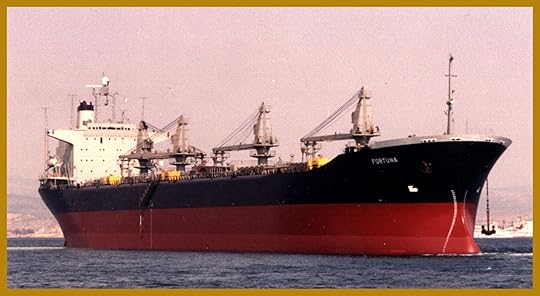
The chief mate was on the forecastle with the bosun and 3 sailors preparing to anchor the ship. Master was on the bridge of the ship with the second mate, a helmsman and a lookout. The ship had just arrived in the pearl river delta after a long sea voyage, and this being the middle of the night there was no means of communication between the bridge and the forecastle except for flashing lights, a loud ships horn, or a loud voice though a megaphone.
We are talking about 100 years ago, the ship was relatively small and still ran on coal fired boilers. The communication between the ships bridge and the engine room was even more difficult. Coal fired steam Boilers were very messy, and the steam engines were extremely noisy. Engine telegraph transmitted the bridge commands from the bridge to the engine – such as full steam ahead, or half ahead, or stop, or half astern.
There being no brakes on the ship, the master was extremely good at anticipating the next movement necessary and transmit the command to the chief engineer in the engine room, as well as to the chief mate on the forecastle. These two men had to be also extremely adept at not only understanding and following the orders from the ships bridge, but also as understanding the entire complexity of the situation in their respective stations and taking actions that would facilitate the final outcome – safely anchored ship without any damage to the ship, anchor, chain, propeller or any other ship.
For example, if the chain was running out too fast, the bosun, or chief mate would have no way to ask the master what was the depth of the water on the chart map or how high the tide was expected to be. They would have to use their own judgment to let go the anchor with sufficient force for it to hold the weight of the entire ship for several days, yet not too much force for it to take out the entire windlass with it.
They were aware of other ships which accidentally let go anchor in far more depth than anticipated, and did not control the force in time so that the anchor chain just ran out and broke the windlass. The chief engineer’s job was even more complex. He had no visibility of what was happening on the bridge, or the forecastle. Yet, he was somehow expected to anticipate the engine movement and respond in time for it to stop the ship so that the anchor can take hold and ship can swing into the tide.
The master relied on these two highly skilled operators who each has their own teams of skilled operators to help them.
And then the walkie-talkies were invented.
The master and chief mate are constantly talking to each other about the situation. The engine room can be reliably controlled from the navigation bridge so engineers in the engine control room stay there only for emergency coverage.
Chief mate can now provide accurate information from the forecastle station, and master can issue precise instructions of what to do, and when. Chief mates, chief engineers and even masters do not need to be so highly skilled in the ‘art of anchoring’. Reliable and constant flow of communication has made it unnecessary to anticipate and act. Co-ordination is a lot easier. Less need for contingency planning at each station. Dropping an anchor, even in the middle of the night and/or in a busy channel with high current, wind or tide, has become a relatively far simpler exercise.
Communication technology always leads to possibilities of centralisation. How much to centralise, and how to create a new operating system is an art.
The debate continues in every company. How much to centralise? How to centralise? Why to centralise?
Strategic thinking is a must. No school can teach this – not even with the best case studies. Experience is the best teacher.
The post Dropping an Anchor – Strategic Thinking on Centralisation vs Decentralisation appeared first on Global Supply Chain Group | Management And Strategy Consultants.
April 29, 2015
Key themes from The Asian Bankers Summit – April 2015, Hong Kong
Despite a high level of participation, and over 1,000 attendees, the mood was rather sombre. I enjoyed the frank and realistic discussions and tried to attend as many sessions as my limited schedule permitted.
I am a Chartered Financial Analyst (CFA) for the last 14 years, and attend their events occasionally. I noticed a marked difference here – a number of CFOs, strategists and business leaders were present. So the discussion was far more holistic, realistic and strategic, rather than just investments and products oriented.
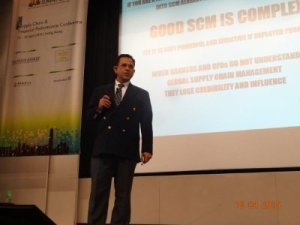
My own presentation on the disconnect between the worlds of finance, strategy and supply chain management was well received and prompted serious audience discussion. But, in this post I want to note the key themes that I heard from others and resonated with me:
1. The cost of financial transactions is falling dramatically:
Some observers noted a figure of upto 1/10,000 times reduction in financial transaction cost due to technological advancement. Banks are struggling to retain their high margin – somewhat like telecommunications companies tried to do when skype and VOIP came out. Yet, the competition is making inroads from many directions. Many of the new entrants were quite prominently visible at the summit.
2. Bitcoin is not a ‘bit player’ any more
About 2 years ago I wrote this blog on Bitcoin titled ‘Will BitCoin ever amount to anything more than a bit?’ In this blog I wrote:
While as a store of value, Bitcoin or its clones may or may not be a suitable replacement for money. Wild gyrations in prices tell us that they are neither good investments, nor good store of value. Unknown complex computer algorithms that create new bitcoins somehow do not create the perception of scarcity that deep underground tunnels for gold mining do.
However, as medium of exchange Bitcoin or its clones may be on to something. In a world where most supermarkets, or even book-stores are not complaining when they earn a margin of 2%-5%, it appears ludicrous that credit card companies can command a transaction fee that is equally high. These high fees, and the processes that accompany them were designed in the days of coaches and buggies when none of the efficiencies of modern communication and transportation were available. Whatever happens to the lawsuit with $7.25 Billion settlement in “eight years of antitrust litigation that accuses Visa and MasterCard of conspiring to inflate retailers’ interchange, or swipe, fees on credit card transactions“ (Reuters) in the long run sophisticated networked shoppers will become aware of the power of crypto-currencies to facilitate cheaper international transactions.
I know I should have taken a picture of the bitcoin ATM at the summit – to show the progress it is making as a crypto-currency. Of course, this is still just a start, and questions about propriety might still be in the air. Yet, it is alive and well.
3.Banks are slowly losing credibility and influence, and will have to find new ways to regain these:
A remark made by a highly respected colleague (Paul Bradley) resonated with the audience when he said
The last meaningful innovation to come out of merchant banking to boost international traded was a Letter of Credit. And that happened when ships were made of wood.
Lack of innovation is just one of the reasons. Financial engineering solutions are also more likely to be seen as counter-productive and self-serving by the client boards and CEOs. Questions about market transparency and fairness abound in answers are found less than satisfactory in many minds.
4. CFOs are looking for new ways of adding value to their companies:
Gone are the days when financial engineering could be relied upon to boost the ROE. In addition to #3 above, the QE and ZIRP have both contributed to creating an environment where cost of capital is temporarily far below its historic levels. CFOs expressed wariness about how long such an environment would last.
Hence CFOs are looking for other parts of the famed “Dupont Analysis” –
ROE = Profit Margin (Profit/Sales) * Total Asset Turnover (Sales/Assets) * Equity Multiplier (Assets/Equity)
Source:http://www.investopedia.com/terms/d/dupontanalysis.asp#ixzz3YkmTcIYC
Operational efficiency (profit margins) and asset effectiveness (asset availability and utilisation) have become far more important for CFOs than they were ever in the past. Supply Chains are becoming increasing popular with CFOs as a result – although there is still a lot of confusion about the meaning and use of this discipline.
5. Supply Chain Management is seen as the panacea – though most people do not quite know how to use it:
This theme was a bit unexpected, and somewhat amusing. For the first time in my life, I heard the words Supply Chain Management from so many bankers and finance professionals. Everyone was sure that the answer was somewhere in there – yet there was not a lot of clarity about exactly where was the answer. I am sure with over 1,000 people in attendance, there would be an equal number of problem. Hence, the solution would be equally diverse. Yet, the lack of clarity was eye-opening.
I am hoping that in future summits more clarity will emerge.
On the whole, if you are a finance, strategy, technology or operations professional, or a senior executive – I will wholeheartedly recommend that you attend a future summit. The organisers pulled all stops to make this event a huge success. Kudos to them.
The post Key themes from The Asian Bankers Summit – April 2015, Hong Kong appeared first on Global Supply Chain Group | Management And Strategy Consultants.
Confusion about Supply Chain Management could kill your business
When I explain to them that I ran a company called Global Supply Chain Group and I help companies improve their supply chain management, most of the people I meet still do not fully understand what supply chain management is, including those in the alumni of my business schools or Chartered Financial Analyst Institute or Law school.
So much so that occasionally I even get asked questions such as “So what kind of chains do you supply to the businesses?” At a more informed level, many people confuse supply chain management with “supply” or procurement or ‘strategic sourcing’.
The most common misconception is, however, between logistics and supply chains, and frequently I explain the difference between these two. This confusion is exacerbated by trucking companies who have painted over their old trucks from XYZ Trucking/Transport to XYZ Logistics to XYZ Supply Chain Solutions without any material change in their capabilities or service offerings. Moreover, many supply chain managers, directors and vice-presidents who come from logistics, 3PL or such companies exacerbate this confusion by not expanding their skill-set. They rely on CEO’s (and other stakeholders’) lack of differentiation capability between logistics and supply chain to narrowly define their role and stay well within their comfort zone.
I answer the question about what we do saying that we help create profitable business transformations using supply chain management as a very effective and balanced tool-kit, contrasting such business transformations against purely soft-skills based transformations (such as culture change) that rarely stick in rough and tumble of real life companies, and against purely hard-skill based transformations (such as process re-engineering) which cause a lot of angst. I show them a simple diagram such as the figure below to explain the progression of supply chains from a lower level of sophistication to a higher plane of profitability.

Source: UNCHAIN YOUR CORPORATION – Vivek Sood (forthcoming)
This starts a discussion on the various generations of SCM (supply chain management) and how they grow in sophistication over each succeeding generation. Those are the type of questions I can illustrate easily with case examples and real life stories. There will be a lot of these stories in this book.
I make it more real to people by explaining to them that we help companies configure business-to-business networks in a much better manner than they have done in the past. It used to be the case, or even still is now, that business-to-business networks are configured in an ad hoc manner on an as-needed basis. In most cases, these relationships are never formalized and fine-tuned to an extent where companies would create robust collaborative working environments to help develop new products, or create pipeline of products, to optimize profitability or to help manage the cash-to-cash cycles in the most productive manner.
The difference between a well-functioning business-to-business network and suboptimal one is a nearly 5 times difference in profitability. Now that is something that will easily intrigue most CEOs and business school graduates. When people hear that a good business-to-business network can increase profitability by up to 5 times by improving the cash-to-cash cycle, by improving the transactional optimization of profitability, by helping create new products faster and better, and by outsourcing better, most people are very interested to clear the confusion about how current generation supply chain management works.
Source: UNCHAIN YOUR CORPORATION – Vivek Sood (forthcoming)
The post Confusion about Supply Chain Management could kill your business appeared first on Global Supply Chain Group | Management And Strategy Consultants.
April 3, 2015
Doing collaboration: The right way to improve your Supply Chain – Vivek SOOD – Global Supply Chain Group
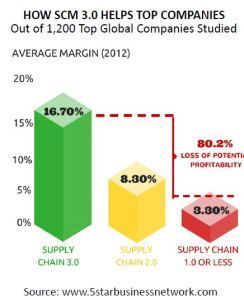 Supply Chain Management (SCM) is an essential element of operational efficiency. SCM is critical to business operations, therefore it is clearly important for a company to know, understand and master the supply chain.
Supply Chain Management (SCM) is an essential element of operational efficiency. SCM is critical to business operations, therefore it is clearly important for a company to know, understand and master the supply chain.
Supply chain’s evolution can be break down into three generations. That is an easy way for companies to understand how to be more efficient and maximize the benefits of a good supply chain. The three generations of supply chain go from supply chain 0.0 to supply chain 1.0, then to supply chain 2.0 and eventually reach supply chain 3.0.
Now, an important question should cross your mind: What are the differences between supply chain 0.0, 1.0, 2.0 and 3.0?
Supply chain evolution is quite logical. The generation 0.0 represents the absence of supply chain. Business act is then individualistic, each group is on its side working without or with very weak cross-functional communication and relationship. A company which is intending to be a well-established player in its field cannot stay at this stage.
The first main change brought by supply chain 1.0 is communication. Communication channels at horizontal level between different departments are created which is break down the silos. In order to be more efficient, people talk with each other across the departmental line and planning and scheduling become a team work. An ERP System is put into place to formalize communication.
 But such a supply chain can become a little bit inflexible. If a company wants to overcome this difficulty, it has to expand its circle of collaborators. All the groups of the company have to take part in brainstorming and collaborate for the creation of a more structured planning environment. That is the aim of supply chain 2.0: Helping the finance to work together with operations and sales in order to establish a coherent set of integrated business plans to shape one single business outlook that can be agreed on and actionable by everybody.
But such a supply chain can become a little bit inflexible. If a company wants to overcome this difficulty, it has to expand its circle of collaborators. All the groups of the company have to take part in brainstorming and collaborate for the creation of a more structured planning environment. That is the aim of supply chain 2.0: Helping the finance to work together with operations and sales in order to establish a coherent set of integrated business plans to shape one single business outlook that can be agreed on and actionable by everybody.
The next step is to go beyond this to an attractive flexible and structured plan. How can we do it? It is time for the company to reach the supply chain 3.0 and stop taking its positions for granted. The solution is called the flywheel of supply chain 3.0: create collaboration with suppliers and customers in order to create products at lower cost and higher degree of matching with consumers’ expectations.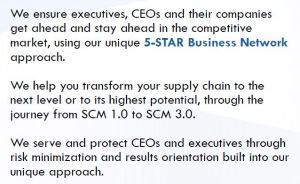
The post Doing collaboration: The right way to improve your Supply Chain – Vivek SOOD – Global Supply Chain Group appeared first on Global Supply Chain Group | Management And Strategy Consultants.
April 1, 2015
How organizational silos can ruin your supply chain – Vivek SOOD – Global Supply Chain Group
How organizational silos can ruin your supply chain – Global Supply Chain Group
Vivek Sood
Organizational silos are based on the division of labor, on organizing the labor in such a way that each individual specialized in what he/she knows best, so that it can all be integrated in such a manner that a cohesive whole which is created in the result is much better in quality and much cheaper in price. This gift of the industrial age to humanity allows to make a production must better in quality and must cheaper in price. Indeed, because of the period of time, the person will become very good at his production and work at a much faster rate, even if the technology is the same. Each employee will make his work much faster, and he would make it much better quality than if he was making the whole product.
By the 70’s, the division had been carried too far, in fact, so far that each person would pretend that as if he has nothing to do with the other employees. To give you an example, I was working in a business transformation project in a mid-sized airlines and I was sitting in the office of the person in charge of maintenance planning of the aircrafts. At one point in the conversation he dug out and e-mail exchanged with his colleagues from across the room and this e-mail exchange had been carried on over a period of 18 months. This trivial matter could have been solved by just walking across the room in an authentic spirit of give-and-take and collaborating across the silos. People in both silos have entrenched themselves into such a position where no action could be taken, the decision-making was extremely slow and people were pointing fingers at each other.
In fact, every organization we have seen, to some extent or other, suffers from this silos mentality. The bureaucratic organization of supply chain 0.0 leads each department to become a pyramid. Any information which needs to be passed from one department to another would have communicated with the head office of one department to another. Imagine the time wasted and the problem of information distortion in the process. By killing the spirit of collaboration, it hampers efficiency and effectiveness.
No wonder this kind of organizations find it very hard to compete against even rudimentary supply chains, such as supply chain 1.0. Many companies struggle with one business transformation after another without addressing the root cause of information holding and silos in supply chain 0.0. If the company stays stuck in organizational silos, no appreciable improvement will be seen: Information holding will become rife and selective information sharing, the norm. Blame will be the name of the game in such a situation.
The post How organizational silos can ruin your supply chain – Vivek SOOD – Global Supply Chain Group appeared first on Global Supply Chain Group | Management And Strategy Consultants.
March 21, 2015
Radio Interview of Vivek Sood on The Michael Dresser Show | 5-STAR Business Network
Interviewer: Michael Dresser of The Michael Dresser Show
Interviewee: Vivek Sood of Global Supply Chain Group
(author of The 5-STAR Business Networks)
HERE IS An audio of the interview
Get the Book Now
Here is the entire transcript of the interview:
Michael Dresser: Welcome back! I’m Michael, you’re listening to the Michael Dresser Show, Vivek Sood with us, the author of the “5-Star Business Network” and the tremendous effect of supply chain in business networking. Social networks are proliferating and most people think that Facebook and Twitter are ultimate and power rich when it comes to networks, but no. Many marketers and businesses are missing another network that’s hidden in plain sight. Business-to-business networks, they’re called, supply chains, they are at least 2000 times more powerful and widespread. And now these networks are going global and also digital. Vivek is known among smart executives who might be CEOs one day for practical business strategies, practical because they’re crafted in real world, not academia. Vivek, welcome to the show!
Vivek Sood: Thank you, Michael! It’s a pleasure to be here with you.
Michael Dresser: By the way, am I pronouncing your first name right? I hope I am.
Vivek Sood: Yes, you are, absolutely!
Michael Dresser: Ok, great. Let me ask you this. What got you to take a look at business? Obviously there’s got to be that time in your life when you look at something and you say there’s something missing. What caused your journey, that search for what you found?
Vivek Sood: Michael, it’s been a long journey. I’ve been a management consultant to CEO for about 17 years now. I saw that lots of business transformations that companies are going through were failing for some very simple reasons. And those reasons had to do with business-to-business network of their businesses. And that’s when I started investigating these business-to-business networks.
Michael Dresser: You know, when we talk about it, we think business-to-business stay locally within a country. But we’ve expanded today. A business doesn’t do just work in their hometown, they do business globally. And if you are not aware of what’s available for you, and that rich that’s out there, a business that could be successful just won’t work, will it?
Vivek Sood: Absolutely! Michael, let’s go back a few hundred years’ time. All business was very local. The local village had all the artisans which could provide you with whatever you needed. Soon it became regional, because they could find better product, better artisans. And very soon after that we started looking beyond about this. Today the business is totally global. You name any product, you can track its journey all around the globe before it reaches the shelf. Before it reaches the customer’s hands, the product has traveled 5 thousand to 10 thousand miles around the world.
Michael Dresser: Absolutely! By the way, and the average consumer, we have a brand new consumer now. The e-consumer can sit in their house, press the button and track any button in the world.
Vivek Sood: Absolutely! Today I’m sitting in Australia, and I can order the best cold clothes, skis out of United States, track them and basically have them delivered to my home, to my office within a period of a week. And I have the world’s biggest inventory on my back and call, right there on the Internet.
Michael Dresser: By the way, Global Supply Chain group, which is the company that you founded. What’s the essence of the group, what does the group do?
Vivek Sood: Global Supply Chain group has only one purpose. We work around the world with large corporations, who have supply chains, but their supply chains are not what we call A class supply chain, the supply chain 3.0. We work with these companies to improve the performance of the supply chain, and the difference is huge. When you jump from C class to A class supply chain, your profitability goes up by 5 times. And that’s what we help out clients to.
Michael Dresser: When we deal with business-to-business networking, obviously you’re not going to have two businesses with the same offering. So I’ve got a business, I have an offering, you have a business, you have an offering. If the offerings can complement each other, do we what? Do we joint venture? Or each one advertise the other’s business?
Vivek Sood: Absolutely! Let me give you an example. Let’s take one of the world’s biggest corporations, Apply Corporation. Before iPhone came along, there were already smartphones made by Samsung, but the screens were really bad. I actually happened to own one of those Samsung Omnias. You had to press a button three times. Apply figured out that the best way to get a new iPhone much better than the existing technology is to work on the screen. Apply didn’t have the screen technology, it went out and found a business partner which had that technology. It made a deal with this partner, who supplied them with this screen and which in the end gave iPhone the edge over the existing technology.
Michael Dresser: So effectively, what we’re really doing is engaging the businesses. You know, the business-to-business, the name is ok, but the actual engagement, complementing each other, implementing that certain something that’s missing within the business that causes them not to get where they need to be. So we find the expertise in particular businesses, we tie them together, and in essence there’s one unit going out there, even though their profitability is individual.
Vivek Sood: Absolutely! Businesses do not compete as businesses anymore, they compete as networks of businesses. Imagine a pack of wolves hunting, competing with a lone wolf hunting in the middle of snow. Obviously, a pack of wolves would definitely win.
Michael Dresser: By the way, when you come down to it, there’s a lot of businesses out there today. Everybody’s doing Twitter, everybody’s doing Facebook and they really are not aware of the next step. I guess Global Supply Chain group is really the next step beyond Twitter, and beyond Facebook, and beyond LinkedIn. LinkedIn is really the business opportunity, but when you come down to it, it’s the ability to put these places together, the ability to reach out. And not just reaching out, knowing how to reach out, because there’s got to be a strategy behind it, it’s got to have a process.
Vivek Sood: Absolutely! These things are now state of the art technologies, they’re state of the art methodology. And yes, you have to find the right partners, to reach out to them in the right manner. A team players always like to play with the A teams. So if you reach out to them in a wrong manner, or if you play the game not the way they like to play it, very soon you will find yourself not the part of the A team. At the same time, the social network are useful. You can’t say they don’t have a role to play, but they have a role to play more on the consumer’s side, when you engage your consumer into a conversation, to understand what exactly matters to a consumer and to a customer. For business-to-business engagement you need a much deeper and much more involved strategy. And that’s where we basically help our clients.
Michael Dresser: When we take a look at it, I want to go back to when I was introducing you: “known among smart executives who might be CEOs one day”. Getting the information, getting to know it beforehand is wonderful, but is there a wall, is there a challenge to get into a business, that’s already a multimillion-dollar business, they could become a multibillion-dollar business if they would listen to what you have to say. Are there challenges to getting these people to take a look at what’s offered, because, you know, too many people are making a certain amount of money, they’re scared to make that move.
Vivek Sood: Absolutely! I think you hit the nail on the head. A lot of businesses are in a comfort zone and they don’t recognize the need to move beyond the comfort zone, to actually 5-star network or a business-to-business network. Still, the competition comes in and eats their lunch. So imagine a Nokia mobile phones, before Samsung or iPhone came along. They were in a comfort zone, they never imagined that an iPhone would come along and certainly Nokia mobile phones become totally irrelevant.
Michael Dresser: Now, by the way, that’s really the key, it’s looking beyond what’s there, and especially in today’s market place, today’s world. We have technology that is changing almost daily. I can go back and remember the first computers, they’d fill up a room! But today, you know, you can walk around with something in your hand and that will give you everything that they did. And it is, it’s taking that step and realizing that there’s more. But the only way that you find out there’s more, is you have somebody who is doing it. They’ve got to have somebody “symbolical”, holding you by the hand, taking you through, allowing you to find out what’s available out there and, more important, how to use it.
Vivek Sood: Absolutely! What you need to see is basically benchmark your competition, but also look outside your industry. Look outside other companies in other industries, who are doing much better than where you are and find out the reason why. And you have to be constantly staring, what are the new threats of the horizon, whether they are technological threats or socio-cultural threats, like for example, consumer preferences are changing very quickly as well. As a two-way conversation is becoming possible, you cannot just talk to a consumer anymore, you have to engage them, using things like Twitter and Facebook, but also many other technologies that are available at the moment.
Michael Dresser: I know that everything is globalized, and the world has been global for the last, probably, 20-25 years, at the most, when there was an intensity here. But do you find, because of the different cultures and the different countries that it’s hard to make that connection or, is there that certain something that cuts through all of it that is recognizable to anybody anywhere?
Vivek Sood: Michael, I worked in more than 150 countries now on supply chain projects and business-to-business network projects. What I found is that on the highest level, the corporations are very professional. They understand what is happening around the world in cutting-edge methodologies and they want to learn. On the other hand, tier 2 and tier 3, they are well within their comfort zone, they don’t want to get out of it. They like to blame the events, they like to blame the government, the other people.
Michael Dresser: For what I hear you saying, that’s business oriented, not political. And if you have people with the same mindset, “business-oriented”, it really doesn’t matter what country you are from, because business has a language of its own, profitability has a language of its own and there’s a commonality in interest, in goal-setting.
Vivek Sood: Absolutely! Because in the end the purpose of business is always the same, to find a customer who will profitably buy the product and they can build big enough business based on their customer segment. And that is universal, it’s all around the world. After that it can become a little bit more complicated: how you fulfill the customers’ requirements and that’s where the business-to-business networks coming to play. And the language of business is the same all around the world, Michael.
Michael Dresser: Sure, because when you come down to it, when you look at any country, administrations come and go, presidents come and go, but the one thing that stays constant is the business, because business stays focused on the end result. And I think that’s what we should look at. If more countries looked at the way a business was run, we would probably have less problem that we do today.
Vivek Sood: Absolutely, Michael. We have had this eighty-year experiment in the former Soviet Union and communist bloc, where governments were in the business, running business and that failed quite miserably. So we are now in an era where it is clear that business of business is business. Governments are needed, but not to run businesses. In the end, what creates value for society, what creates value for community is the business. And that is universal around the world.
Michael Dresser: I think that’s the key for America today. We shouldn’t have politicians there, and I’m not getting political, just the point here is that we should have people who understand business, who have been in business, who understand profit and loss. Because when you think about it, you know, most of the countries, and especially in America, we are cash in – cash out. What’s left at the end of the month and what’s not left at the end of the month, what’s the deficit? And we ran this country here more in a business fashion. Most of the problems that we have today, we wouldn’t have. We would not be in this kind of debt.
Vivek Sood: I’m obviously not a political commentator or a political adviser. What I can see is that government is getting more and more into business in America as it is in some other places, and I don’t necessarily see this as a positive sign. Quite the contrary.
Michael Dresser: And the reason for that is, and I’m not being political, is that you have to have someone who has been there, who understands what to do, not from a position from politics. And I believe, when you come down to it, “The 5-Star Business Network”, you do something like that with all businesses and the businesses are succeeding. And when the businesses succeed, you have jobs, you have opportunity and you have a flow of income.
Vivek Sood: Absolutely! If you look at CEO’s job today, Michael, it is probably one of the hardest jobs on earth today. They are asked to do more with less. On the other hand, they are facing so many political pressures, you can’t even imagine.
Michael Dresser: Sure, no question!
Vivek Sood: And on the other hand, employee loyalty is also disappearing. So what can get them out of all this is really business-to-business network, which can allow them to do more with less, which can also allow them to look beyond employee loyalty. Because that loyalty went out the window about 20 years ago.
Michael Dresser: Sure, and I’ll tell you why we have this employee disloyalty, so to speak. Because they don’t feel part of the business, they don’t have an identity within the business itself. When you have people who have identity within the business and they feel like they have an interest – not an ownership interest, it could be commissions, it could be perks, it could be something. But when they feel like they are part of their business and because of them, employees, the business is being successful, all of the sudden you have loyalty. We come up against with a wall, and that wall divides the business from the employees, the engagement isn’t there, being proud of what they are and what they do.
Vivek Sood: Absolutely! There are deeper socio-cultural reasons. When I started work at 17 as an apprentice, I owed everything to a company which taught me what I learnt. Those kinds of apprenticeships are now almost history. Today young people stay in college till they’re nearly 30.
Michael Dresser: I remember my very first job was 1.65 $ an hour, a hundred years ago. We are just about out of time, so let me ask you this: website we can find you at.
Vivek Sood: Yes, my website is www.viveksood.com. So my first name is Vivek, last name is Sood.
Michael Dresser: If anybody misses it, it will be up on our website.
Vivek Sood: The website of the book is www.5starbusinessnetwork.com.
Michael Dresser: Wonderful! And by the way, thank you so much for joining us today.
Vivek Sood: It’s been a pleasure, Michael. It’s a pleasure to talk to your audience.
Michael Dresser: Take care!
Get the Book Now
The post Radio Interview of Vivek Sood on The Michael Dresser Show | 5-STAR Business Network appeared first on Global Supply Chain Group | Management And Strategy Consultants.

